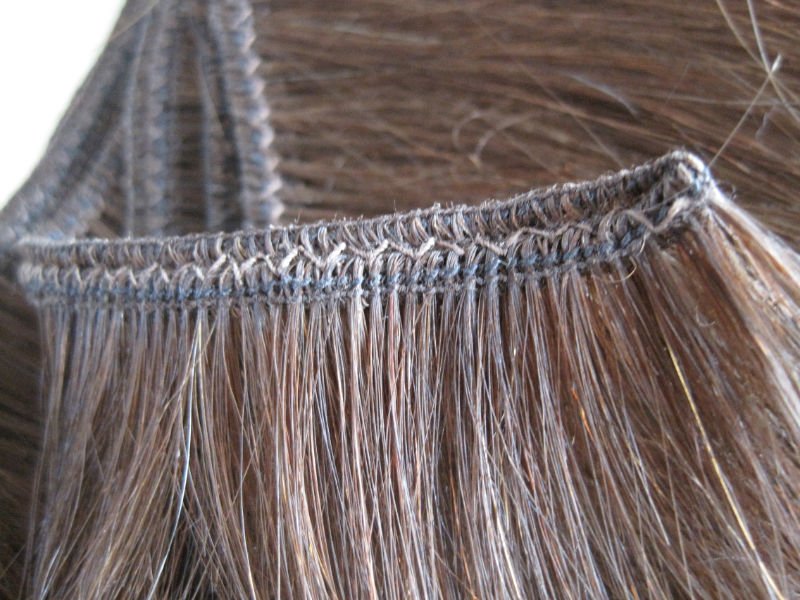weave hair color 33
Throughout history, people have worn their hair in a wide variety of ways, largely determined by the fashions of the culture they live in. Hairstyles are markers and signifiers of social class, age, marital status, racial identification, political beliefs and attitudes about gender.
For most of history, women's hair has been allowed to grow to its full length, and then bleached, coloured, curled, crimped, arranged and otherwise modified, often worn up and fastened with pins, ribbons, jewels and combs. In many cultures, often for religious reasons, women's hair is covered while in public, and in some, such as Orthodox Judaism or European Orthodox communities, women's hair is shaved or cut very short, and covered with wigs. Only since the end of World War I have women began to wear their hair short and in fairly natural styles.
From the time of the Roman Empire until the Middle Ages, most women grew their hair as long as it would naturally grow. Initially they wore it loose, held in place with a band around the brow and covered with a snood, kerchief or veil. From the ninth century until the 16th century, women began to wear their hair in extremely ornate styles, often decorated with pearls, precious stones, ribbons and veils. Women used a technique called "lacing" or "taping," in which cords or ribbons were used to bind the hair around their heads. During this period, most of the hair was braided and hidden under wimples, veils or couvrechefs, and in the later half of the 15th century and on into the 16th century, wealthy women frequently plucked out hair at their temples and the napes of their necks, or used depilatory cream to remove it, if it would otherwise be visible at the edges of their hair coverings. Working-class women in this period wore their hair in simple styles.
In the middle of the 18th century the pompadour style developed, with women creating volume in the hair at the front of the head, sometimes with a pad underneath to lift it higher, and ornamented the back with seashells, pearls or gemstones. In 1750, women began dressing their hair with perfumed pomade and powdering it white. Just before World War I, some women began wearing silk turbans over their hair.

color chart, to see the

Bohyme Color Chart

View Universal color chart

Human Hair weave Body Wave

COLOR CHART B

Human Hair Silky Weaves (#33

1st Chart

Click Here for Color Chart

Hair color:

outre 100% human hair

color weave hair color 33.

Weave 18quot; Colour Chart

Hair Color Chart

ESTEE WEAVING HAIR EXTENSIONE

Select Color: P1B/30, P1B/33

Milky Way Yaky Weave 8\x26quot; Color
For most of history, women's hair has been allowed to grow to its full length, and then bleached, coloured, curled, crimped, arranged and otherwise modified, often worn up and fastened with pins, ribbons, jewels and combs. In many cultures, often for religious reasons, women's hair is covered while in public, and in some, such as Orthodox Judaism or European Orthodox communities, women's hair is shaved or cut very short, and covered with wigs. Only since the end of World War I have women began to wear their hair short and in fairly natural styles.
From the time of the Roman Empire until the Middle Ages, most women grew their hair as long as it would naturally grow. Initially they wore it loose, held in place with a band around the brow and covered with a snood, kerchief or veil. From the ninth century until the 16th century, women began to wear their hair in extremely ornate styles, often decorated with pearls, precious stones, ribbons and veils. Women used a technique called "lacing" or "taping," in which cords or ribbons were used to bind the hair around their heads. During this period, most of the hair was braided and hidden under wimples, veils or couvrechefs, and in the later half of the 15th century and on into the 16th century, wealthy women frequently plucked out hair at their temples and the napes of their necks, or used depilatory cream to remove it, if it would otherwise be visible at the edges of their hair coverings. Working-class women in this period wore their hair in simple styles.
In the middle of the 18th century the pompadour style developed, with women creating volume in the hair at the front of the head, sometimes with a pad underneath to lift it higher, and ornamented the back with seashells, pearls or gemstones. In 1750, women began dressing their hair with perfumed pomade and powdering it white. Just before World War I, some women began wearing silk turbans over their hair.

color chart, to see the

Bohyme Color Chart

View Universal color chart

Human Hair weave Body Wave

COLOR CHART B

Human Hair Silky Weaves (#33

1st Chart

Click Here for Color Chart

Hair color:
outre 100% human hair

color weave hair color 33.

Weave 18quot; Colour Chart

Hair Color Chart

ESTEE WEAVING HAIR EXTENSIONE

Select Color: P1B/30, P1B/33

Milky Way Yaky Weave 8\x26quot; Color

0 Comments:
Post a Comment
Subscribe to Post Comments [Atom]
<< Home